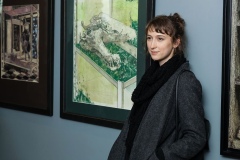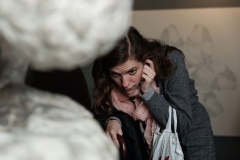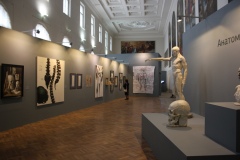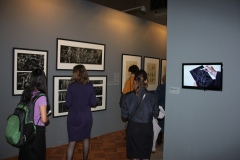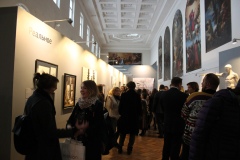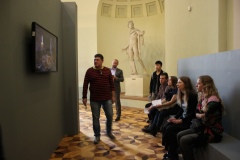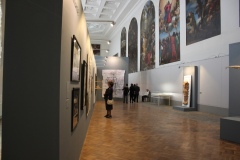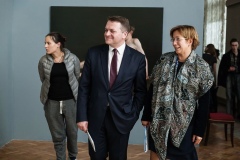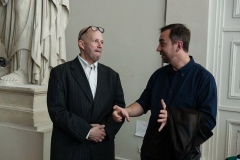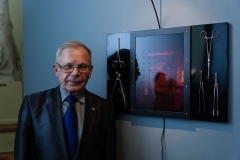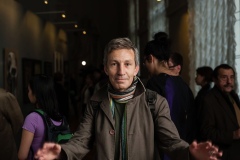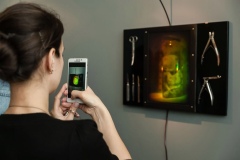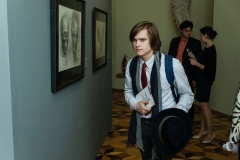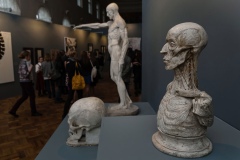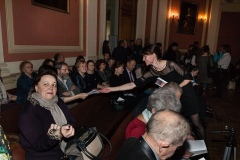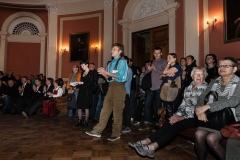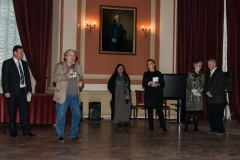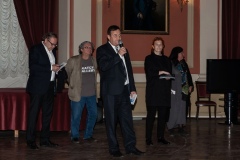
🗓️September 30 – October 30, 2016
RESEARCH MUSEUM OF THE RUSSIAN ACADEMY OF ARTS
Titian and Catherine Halls
📍17 University Embankment, Sankt-Peterburg 199034 Russia
◆”CORPUS. Anatomical Theatre” Part of the program of the 2nd St. Petersburg Biennale of Museum Design Exhibition◆
🗓️Curator: Semyon Mikhailovsky with the participation of Ivan Govorkov
Design: Jack Schlechter
Text: Alexander Borovsky
Opening of the St. Petersburg Biennale of Museum Design and the exhibition “Corpus. Anatomical Theatre”
Friday, September 30 at 5:00 PM
Address: St. Petersburg, 17 Universitetskaya Embankment
**“The concept of the exhibition Corpus: Anatomical Theatre is unmistakably relevant. It reflects a state in the artistic process when the vectors of traditional and exploratory understandings of art align. Such situations are rare, but generally fruitful. At one time, Yury Tynyanov captured something similar in the title of his famous article on poetry, writing with a hyphen: archaisers–innovators. With this, he reactivated many genres considered hopelessly outdated (for example, the ode), and gave new resonance to authors who had long been seen only in a textbook sheen.
The fruitfulness of the situation described above is only potential. It is fully realized only if the researcher (curator) manages to “grasp” the moment of interference, interpenetration, and overlap. Delay—and a crucial opportunity for reflection on the artistic process will dissolve in the flow of constantly changing events. The organizers of this exhibition managed to seize the right moment…”**
— Alexander Borovsky
**“One of the main goals of the diagonal layout is to emphasize the gallery’s impressive scale while simultaneously dividing it into zones, which improves the perception of artworks. The diagonal also implies a specific direction of visitor movement through the exhibition space—ensuring that visitors proceed along a non-repeating route.
I also hope that since the exhibition is dedicated to the human body, the viewer will become more aware of their own body in space, as they move from the wide part of the hall to the narrow and vice versa. I like the idea of creating an ‘anatomical theatre’ in the circular hall. Such a concept generally leads to obvious success if interpreted correctly—by using more abstract references and fewer concrete labels.”**
— Jack Schlechter
The exhibition Corpus. Anatomical Theatre is dedicated to a theme familiar to every professional artist: anatomical drawing. But anatomical drawing—the graphic depiction of the skeletal and muscular structure of the human body—is not confined to art education alone.
Thus, alongside anatomical drawings by students and faculty of the St. Petersburg Academy of Arts from the 19th century to the present day, the exhibition presents works by contemporary Russian and international artists reflecting on the human body in the language of contemporary art: video, installation, objects.
A special place in the exhibition is given to drawings by Gottfried Bammes from the Dresden Academy of Fine Arts, which at one point played an important role in the development of the Russian school, as well as works by Professor Sándor Doró.
Albums from the collection of the Research Library of the Russian Academy of Arts provide insight into the tradition of anatomical drawing.
Thematically, the exhibition is divided into three parts:
-
“The Real Body” – artists’ anatomical studies
-
“The Ideal Body” – an exploration of bodily ideals
-
“The Conceptual Body” – the perspective of contemporary artists
Here you will find drawings by Damien Hirst and sculptures by the Chapman Brothers. Works by prominent artists are exhibited alongside student works.
In the Catherine Hall: a bronze écorché figure created by Clodt, a painting by Konstantin Grachev, and two holograms by Vladimir Kustov are displayed.
The hall also features a film by Alexander Sokurov dedicated to the renowned St. Petersburg scientist Professor O.K. Khmelnytsky.
The exhibition design was developed by Jack Schlechter, Chief Designer of the Philadelphia Museum of Art. He faced the challenge of fitting a large number of works into the two historic halls of the Academy of Arts—the Titian and Catherine Halls. The designer proposed “cutting through” the elongated Titian Hall with a diagonal, guiding visitors along a predetermined route and offering them a new spatial experience.
Exhibition partners:
-
St. Petersburg State Institute of Painting, Sculpture and Architecture named after Ilya Repin (Academy of Arts)
-
Dresden Academy of Fine Arts
-
The State Russian Museum
-
Research Library of the Russian Academy of Arts
-
St. Petersburg State University
-
Triumph Gallery
-
Marina Gisich Gallery
